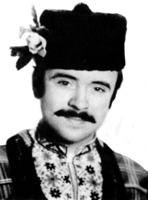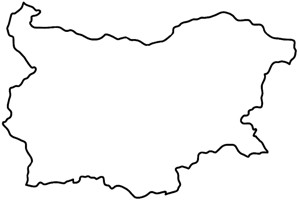
|
The Society of Folk Dance Historians (SFDH)
Dajčovo horo Notes
[
Home |
About |
Encyclopedia | CLICK IMAGE TO ENLARGE |

|
 Repeating David's question: "Where did all those calls and accompanying figures come from?"
Repeating David's question: "Where did all those calls and accompanying figures come from?"
The Dajčovo horo with the many called figures is not a "made up" dance for North American folk dancers. This dance in 9/8, considered part of the greater Dajčovo "family," is known in Bulgaria and East Serbia (Šop, Graovska, and Nišava regions) under various names: Lile, Lile; Lilka; Ile, Ile; Zizaj Nane; and Trne, Mome.
Various descriptions of this dance have appeared in books by the Janković sisters - Vol. V (1949), Stojan Džudžev (1945), Rajna Katzarova (1958), Boris Tsonev (1963), Stefan Vaglarov (1967), Krasimir Petrov (1990), etc.
The version we know may have come from several sources: Anatol Joukowsky taught some variations in 1955 at the San Francisco Kolo Festival and Michel Cartier did the same at Kolo Festival in 1961. Dick Crum also did a version. The dance is often part of East Serbian choreographies done by Serbian groups. The famous Belgrade KOLO State Ensemble had a Lile, Lile in its "Pirot Suite" and ex-KOLO dancer Bora Gajicki even taught it in California.
I learned the dance from Michel Cartier in Montreal in 1964. Cartier had learned it in Bulgaria in 1957-58 when he worked with choreographers, such as Dženev and Haralampiev, who used it in their choreographies and classes. The late accordionist Boris Karlov made the most famous recordings of the tune we love in the early 1950s. Karlov was quite familiar with the Western Bulgarian repertoire and Zizaj Nane was a favorite among Bulgarians in and around Sofia.
Tzonev in his book "Utchebnik po Balgarski Narodni Hora" (1963) has a detailed description of a Zizaj Nane (Lile) that he says comes from Stanke Dimitrov (Dupnića). He says that the dance leader often gives "commands" that dancers have to "answer to," such as: (1) Slusaj nane (listen), (2) Hajde Šop, (3) Desna noga pred koleno (right leg in front of knee), etc.
Cartier's dance notes that accompanied Folk Dancer record (78rpm) MH 3053 describes five figures with calls: (1) Čukni nane! (stamping), (2) Napred nane! (forward), Triput napred! (three times forward), (4) Zizaj nane! (scuffing), and (5) Pod Koleno! (behind the knee). I remember also doing and hearing: (6) Lulaj nane! (rocking wave), (7) Zad Koleno! (behind the knee), etc.
So to summarize, this dance does exist. There are many sources, names, and variations. The dance went through a typical "folk process" here in America with many clubs and leaders having their own favorite versions, some with calls that have been transformed or even made up over the years (just like in the village . . .).
DOCUMENTS
- Dajčovo horo, a dance.
- Yves Moreau, an article.
Used with permission of the author.
Taken from the East European Folklife Center (EEFC) List
and printed in Dance Traditions, September 1999.
This page © 2018 by Ron Houston.
Please do not copy any part of this page without including this copyright notice.
Please do not copy small portions out of context.
Please do not copy large portions without permission from Ron Houston.